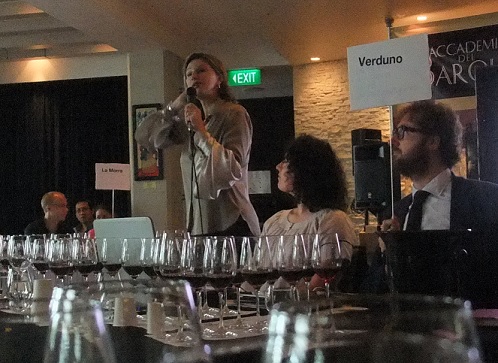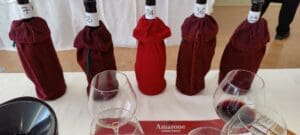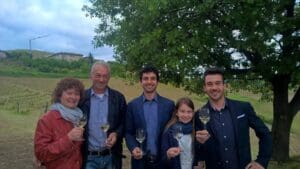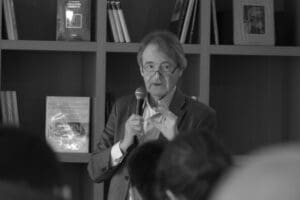Barolo, Italy’s answer to Burgundy. Light colour, high acid, firm tannins, elusive bouquet and its ability to age with elegance. This is the “wines of kings and kings of wines”. At a seminar hosted by Debra Meiburg MW with representatives from Accademia Del Barolo, I was privileged to taste nine Barolo from the 2008 vintage.
First look on Nebbiolo & Piedmont
A name originated from the word ‘nebbia‘, fog in Italian, which causes many to consider this foggy-relation to the climatic condition of Piedmont. However based on Jancis Robinson note in “Wine Grape”, it is more apt to associate the name with the berries’ appearance. A misty grey veil over the dark ripened grapes. First mentioned in 1266 based on historical archives in Turin, the variety is recognised as Spanna or Chiavennasca in other parts of Piedmont where it is not made in a Barolo style.
Nebbiolo has a strong preference for warm day, cool night and foggy morning. This geological and climatic pairing predominantly in Piedmont hillside is unique. As such, little success have been observed beyond Italy. In Piedmont, they thrive on prehistoric sedimentary soil with calcareous-rich marl and clay. This common soil type, with some differences, is shared throughout the eleven communes that make Barolo. Yes, that’s right. There are eleven Barolo producing communes, including the one named Barolo. The others being Verduno, Roddi, Grinzane Cavour, Diana d’Alba, Serralunga d’Alba, Castiglione Falleto, Monforte d’Alba, Novello, Cherasco and La Morra. To further demarcate the quality between wine makers, there are now 166 recognised ‘crus’ in Piedmont. An indicator of driving force for higher recognition of single vineyard wines and the degree of variation that can be possibly achieved between neighbouring vineyards.
Drinking a Barolo is akin to reach an elegant lady who is always one step ahead of her followers. An elusive character that always outwit expectations. Therefore, drinkers who expect straight-forwardness will not be pleased with the traditional Barolo, but it charms those who willingly submit and appreciate its complexity. Strong support on the palate, ability to age through decades with persisting elegance, king’s rewards come to only those with patience.
Barolo Auction and L’Accademia del Barolo
Initiated by the Gianni Gagliardo wine estate in 1998 dedicated to the promotion, show case and auction of Barolo. They grew in the years that follow. In 2011, L’Accademia del Barolo took things further by bringing the Barolo Auction out to New York and Hong Kong. Today with a consortium of 14 top notched producers, the Barolo Auction has touched down on Singapore together with representatives from Gianni Gagilardo, Franco M. Martinetti, Vietti, Monfalletto-Cordeo Di Montezemolo, Paolo Scavino, Damilao, Michele Chiarlo, Poderi Luigi Einaudi and Prunotto.
The Host
 Debra Meiburg MW was a charming character. Born in Sonoma County and lived in Hong Kong for the past 25 year, she started her accounting career in Asia under PricewaterhouseCoopers Hong Kong. Eventually she switched her path into wine-related areas, specifically on education and journalism. Knowing her long residency in Hong Kong, I was still surprised to hear Cantonese words coming from her. To facilitate our understanding, she prepared a set of placards, flew in from Hong Kong by hand and distributed to different corners of the seminar to illustrate the location of various communes in Piedmont. Honestly, how far would you go to introduce Jurong from Katong?
Debra Meiburg MW was a charming character. Born in Sonoma County and lived in Hong Kong for the past 25 year, she started her accounting career in Asia under PricewaterhouseCoopers Hong Kong. Eventually she switched her path into wine-related areas, specifically on education and journalism. Knowing her long residency in Hong Kong, I was still surprised to hear Cantonese words coming from her. To facilitate our understanding, she prepared a set of placards, flew in from Hong Kong by hand and distributed to different corners of the seminar to illustrate the location of various communes in Piedmont. Honestly, how far would you go to introduce Jurong from Katong?
A conclusion?
To draw a conclusive remark over all nine wineries would be doing injustice. With impressive variations ranging aromas of roses and plums to tobacco with spices, from light tannic to heavily austere and even numerical comparison of alcohol level from 13.5% to 15%. There was simply no typicality that I can mention. 2008 was a cool year for Piedmont based on vintage reports. Many would regard this vintage as a great harvest of beautiful elegance with unyielding tannins. For plush and powerful wine lovers, this would probably not be a love on first sight. Ultimately, only time can wear off its youthful blunt and present the mature beauty within.



